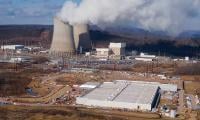KARACHI: Foreign direct investment into Pakistan (FDI) in July fell 45.2 percent year-on-year to $128.1 million, according to figures published by the central bank on Friday. The FDI stood at $233.8 million in July 2017.
The decline in FDI flows was mainly driven by marginal increase in Chinese investments. Lower investments from the various foreign companies also weighed on FDI to the country in the first month of the current fiscal year.
Net FDI flows from China rose to $74.5 million in July 2018 from $73.4 million a year ago. However, non-Chinese inflows remained lower during the period under review.
Similarly, the pace of the direct investments from multinational firms in the various sectors of Pakistan’s economy remained quite bleak. The country’s power sector lost momentum, as it saw FDI decline to $8.6 million in July against $46.5 million recorded in the corresponding month of last year.
Inflows in the financial businesses fell to $1.5 billion from $25.5 million.
Telecommunications sector saw an outflow of $4.3 million in July 2018/19 against the inflows of 68.7 million last year.
Foreign companies invested $12.9 million in the oil and gas explorations sector. Such investments stood at $21.6 million last year.
Analysts said future trends of FDI could not be determined on the basis of one month. However, the outlook would depend on certain factors such as global economic growth and the foreign firms investment strategies in the different countries, including Pakistan.
“The new PTI government needs to attract investors from the United States, European Union and the Middle East with the strong economic fundamentals,” said an analyst. “The new government will have to take immediate measures to create investor confidence. The government needs to offer certainty to the businesses.”
FDI in Pakistan is largely dominated by the sizeable investments by China-Pakistan Economic Corridor (CPEC), part of China’s Belt Road Initiative in the energy and infrastructure sectors. However, the FDI outlook is clouded by risks including deterioration in external finances and fiscal slippages.
Fitch, a global rating agency, expects the new government of Pakistan to seek potential financing from several sources including China and multilateral development banks, and possibly the International Monetary Fund (IMF).
“[However,] negotiations over an IMF agreement could be complicated by loans linked to the CPEC, part of China’s Belt Road Initiative (BRI), particularly amid rising global geopolitical tensions,” stated Fitch.
The central bank sees FDI inflows to remain lower in FY19 than last year as a number of CPEC energy projects are in their advance stages of completion.
It expects the high current account deficit, together with limited financial inflows, will continue to keep the balance of payments under pressure.
Portfolio investment at Pakistan Stock Exchange posted an outflow of $42.1 million in July 2018 against $11.4 million last year. The SBP’s data revealed that total foreign investment dropped 61.5 percent to $86 million in July 2018.















